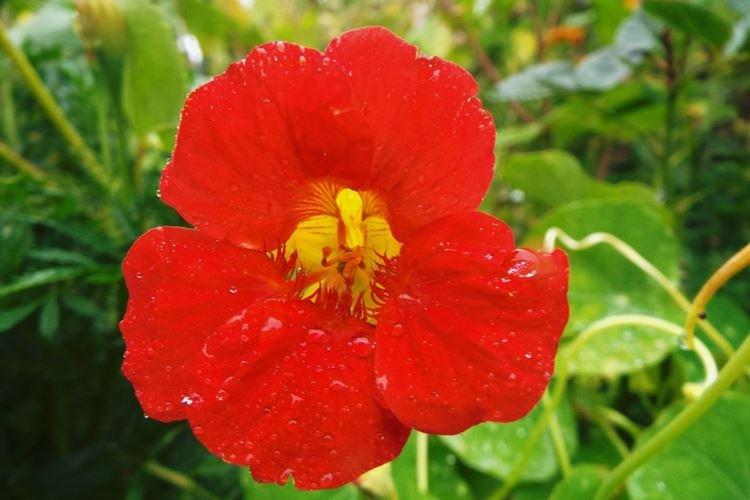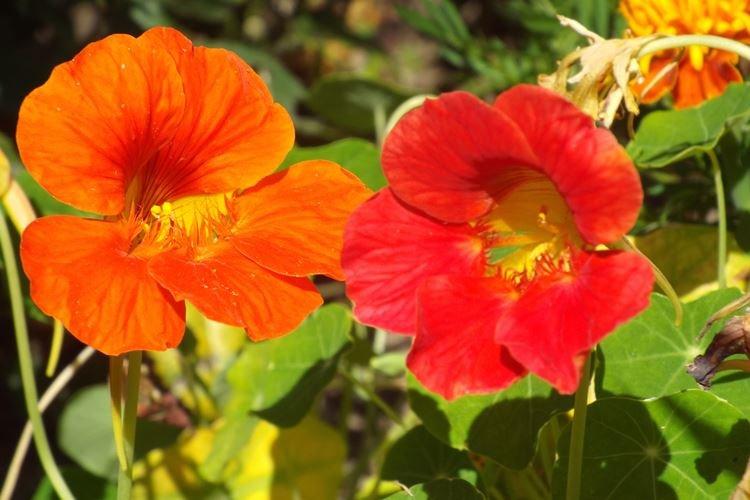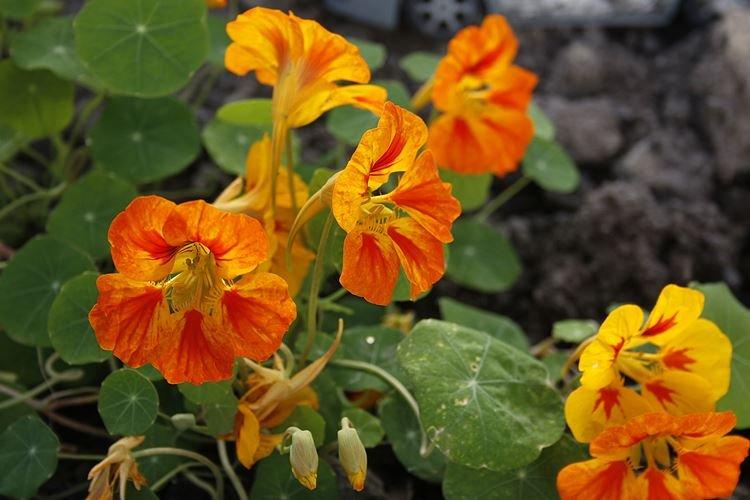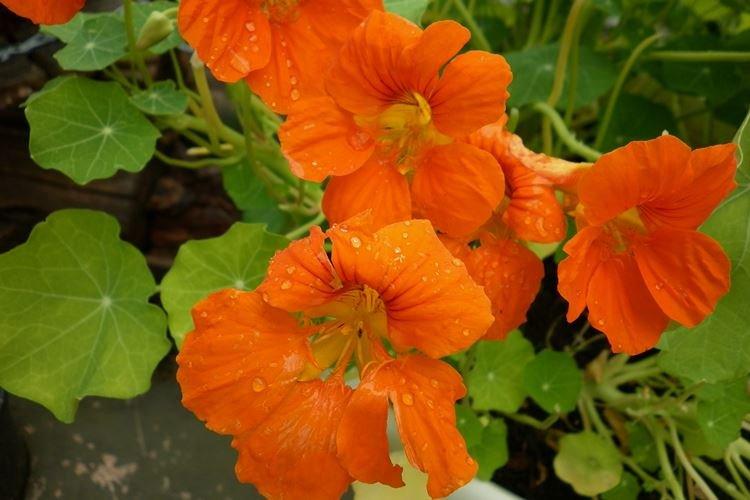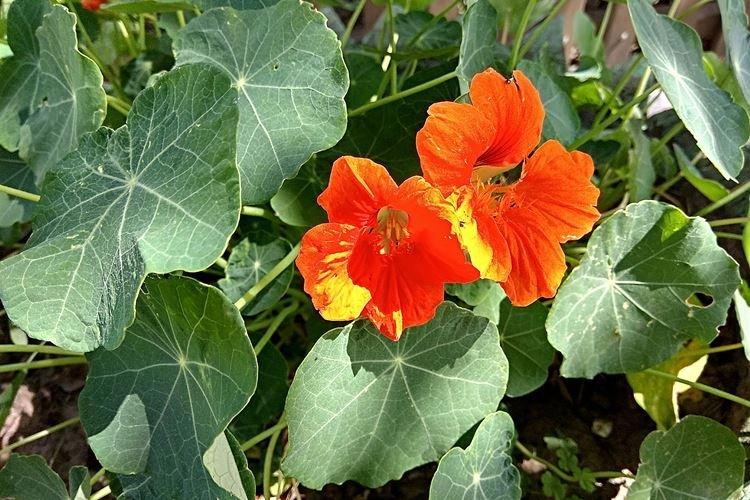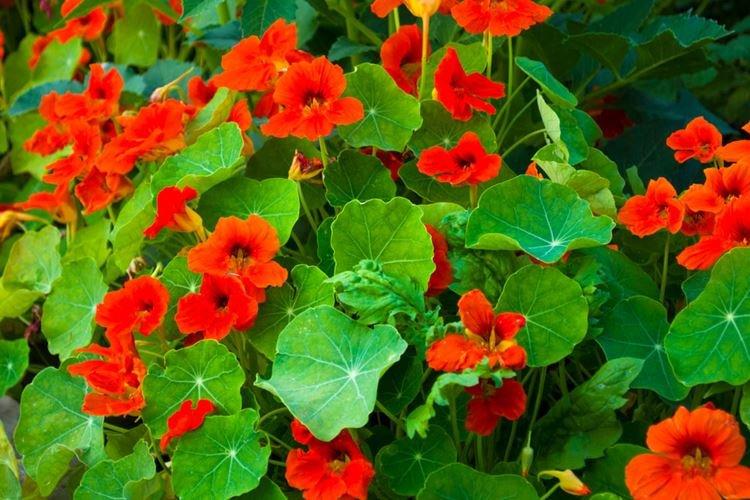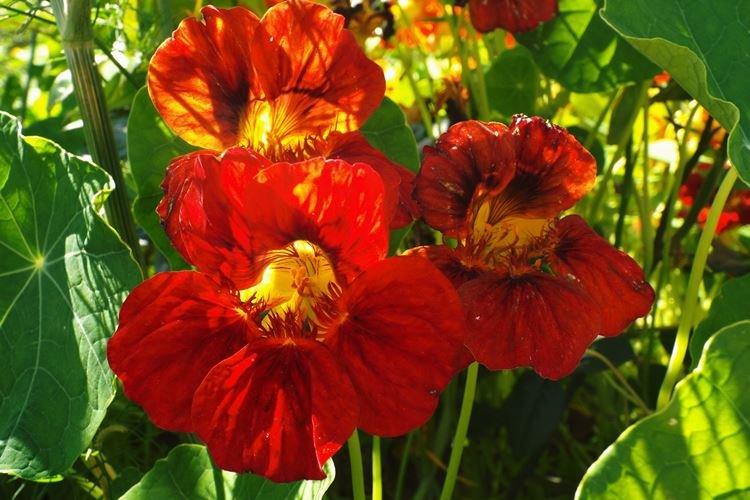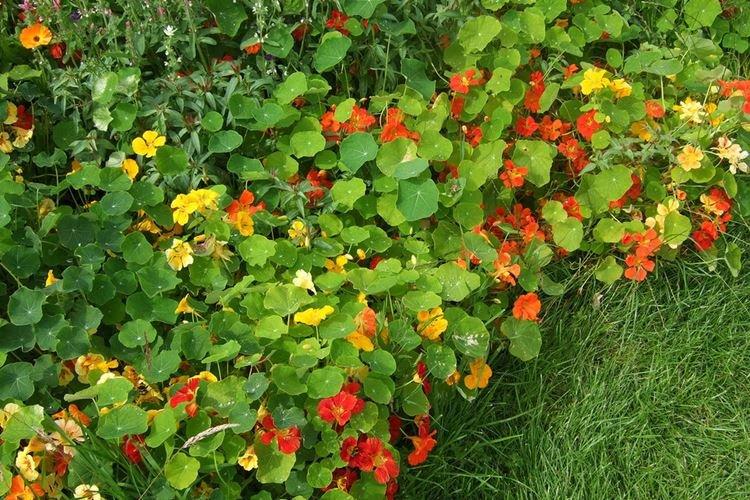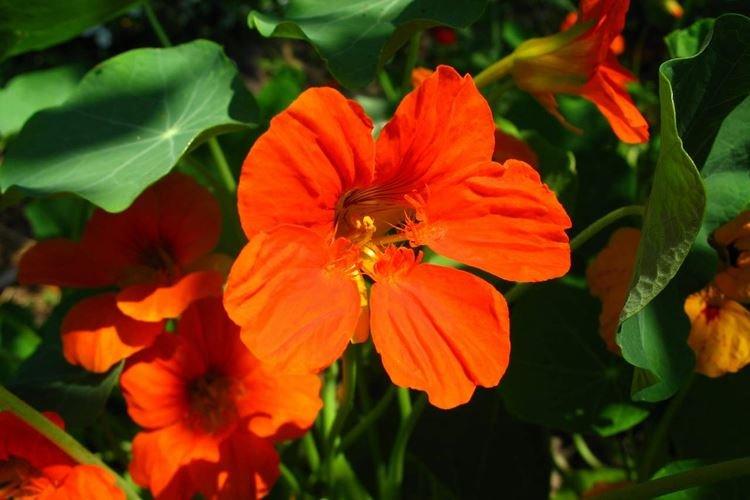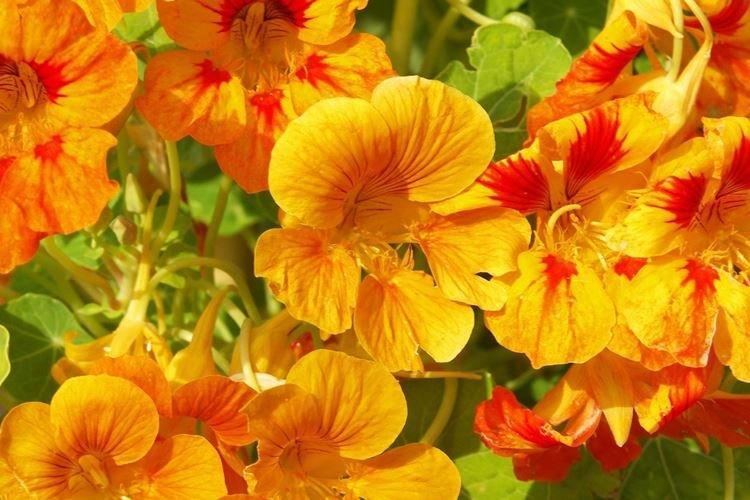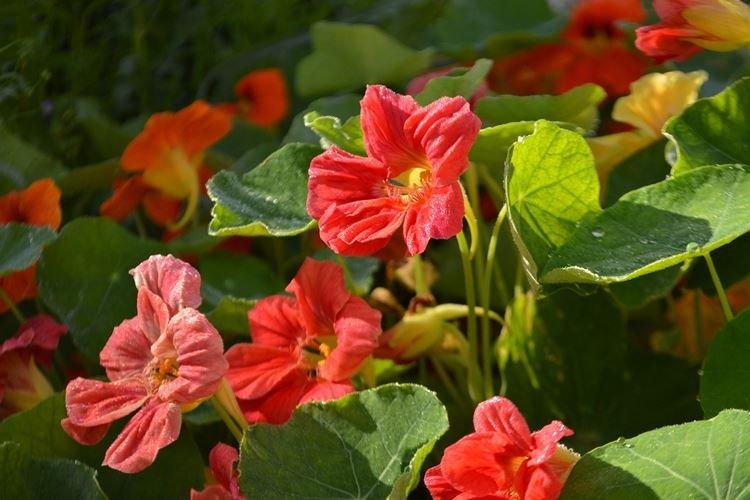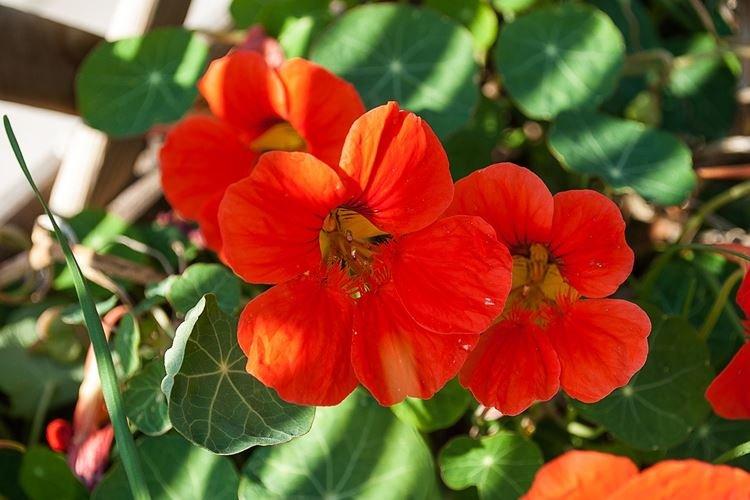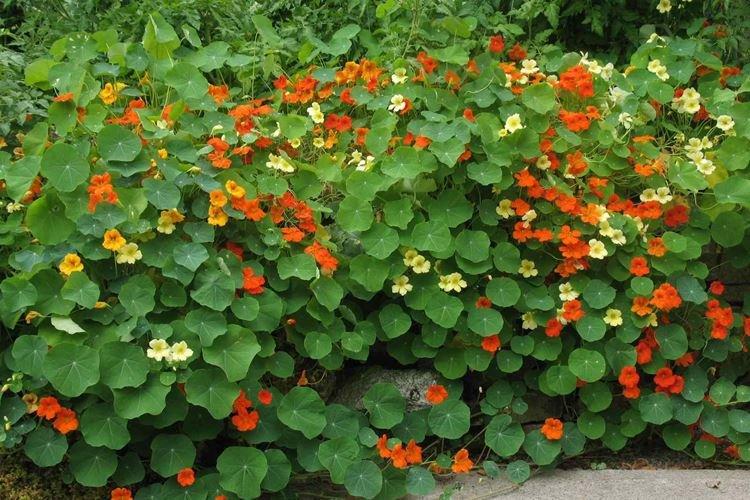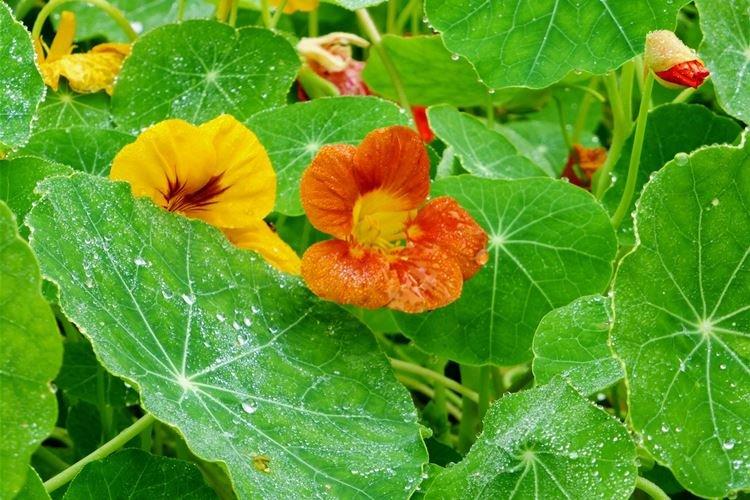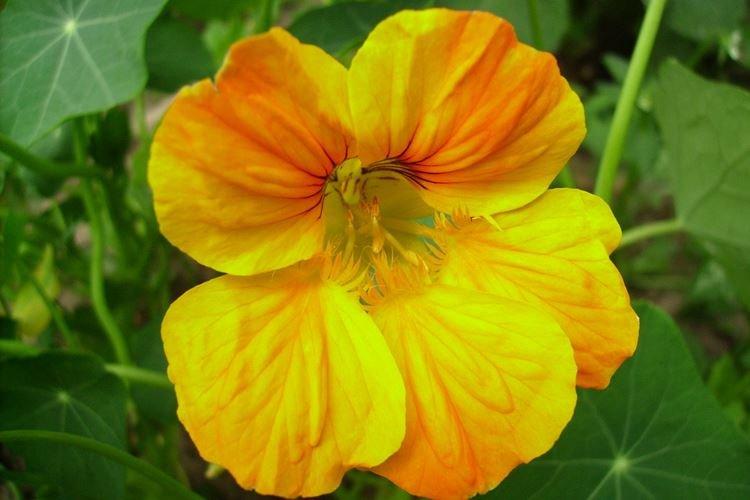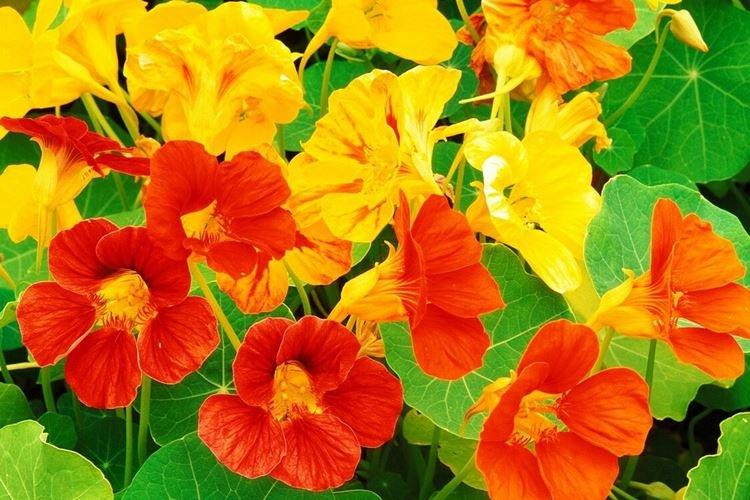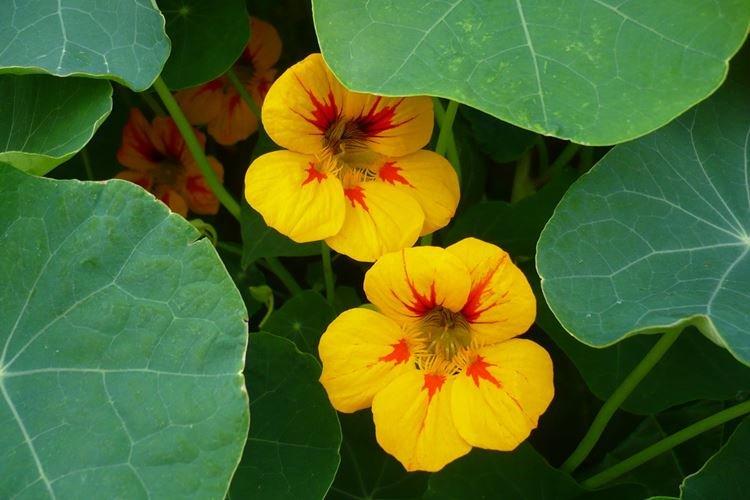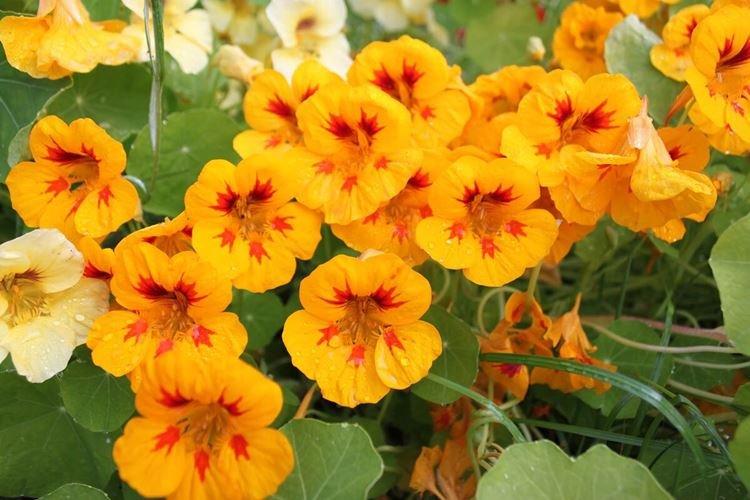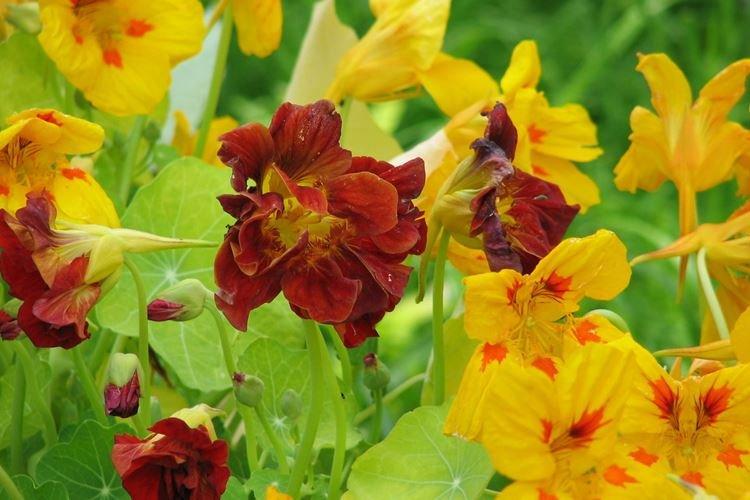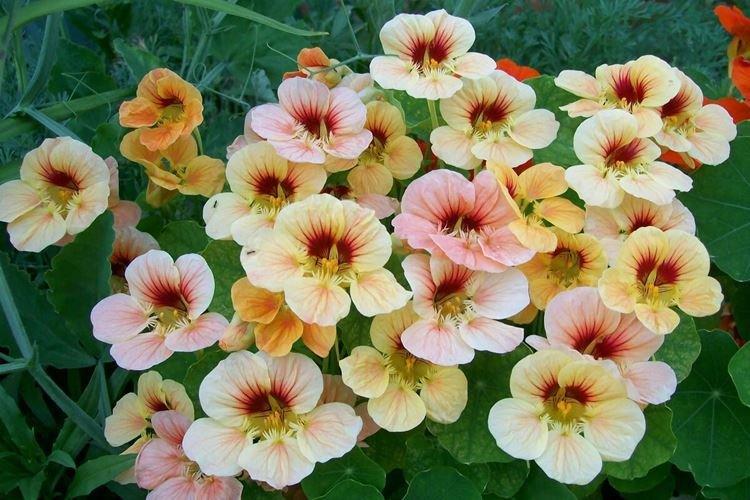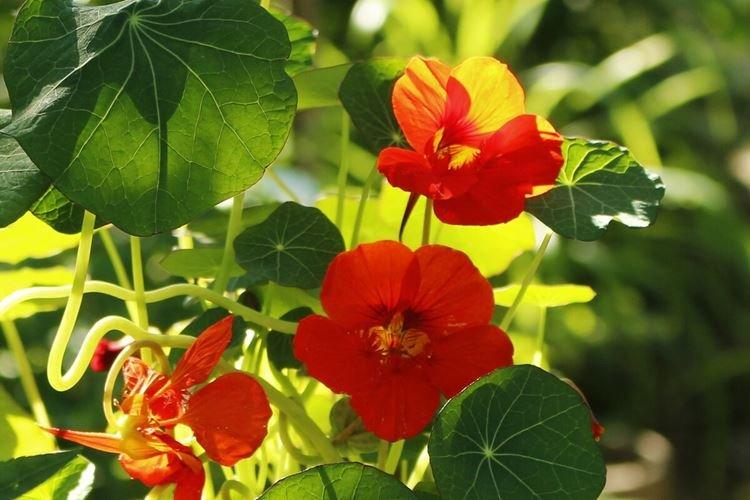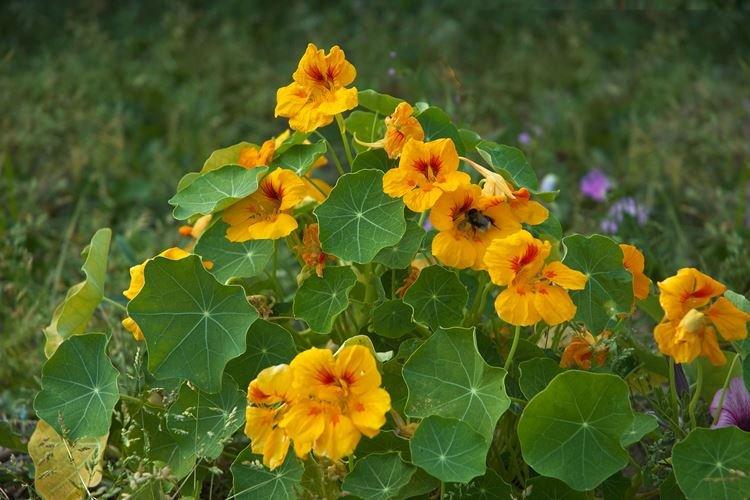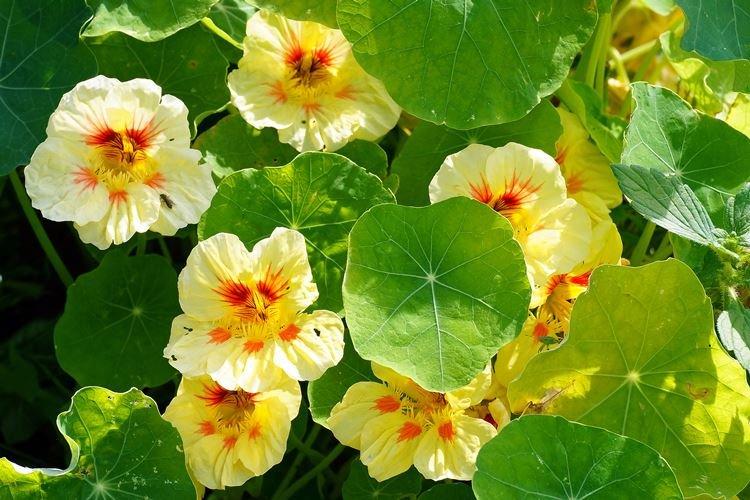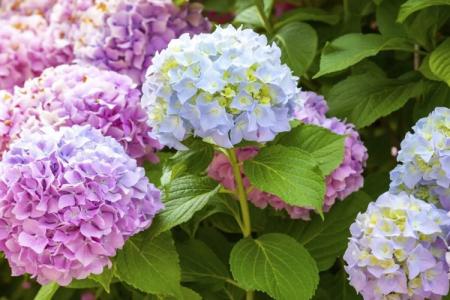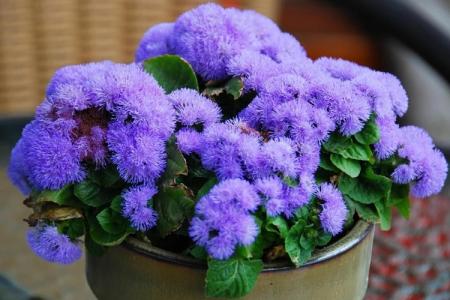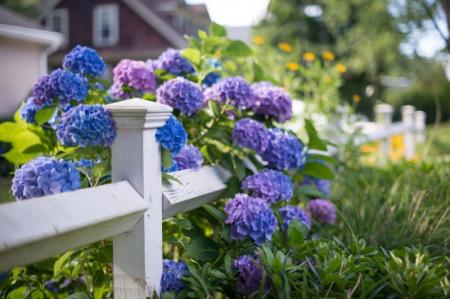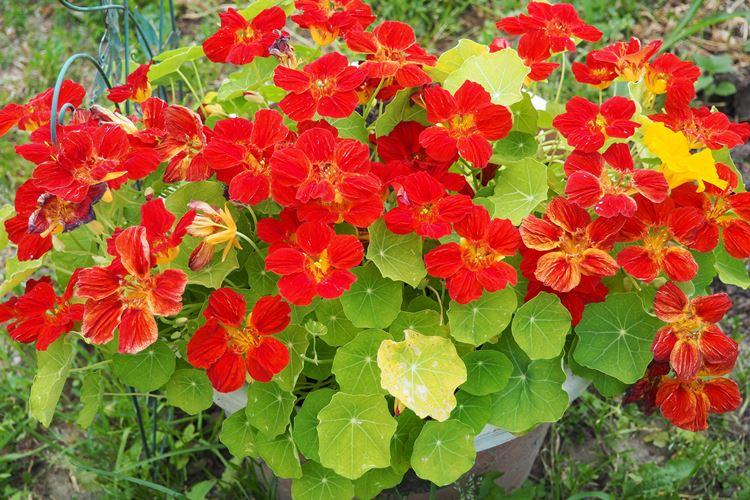
Nasturtium is one of the most beautiful decorative flowering plants. She almost does not get sick, if you take care of her correctly, and gives gardeners a minimum of trouble. The most popular varieties were grown by our grandmothers, and in city flower beds they are found on a par with tulips or marigolds. Let's tell you more!
general information
Nasturtium is a herbaceous flowering plant that came to us from South America, but has long and successfully acclimatized. There are about 90 species in nature, and many of them feel comfortable in mid-latitudes. They are appreciated for their graceful and long flowering, and also for their taste and healing properties.
In Russia, nasturtium is often called "Capuchin", and it came to us from the Netherlands. There are annual and perennial varieties, lianas and shrubs. Opened flowers always acquire a fancy irregular shape of at least five petals, and they are also very fragrant. Among the red and yellow nasturtiums, other colors are extremely rare.
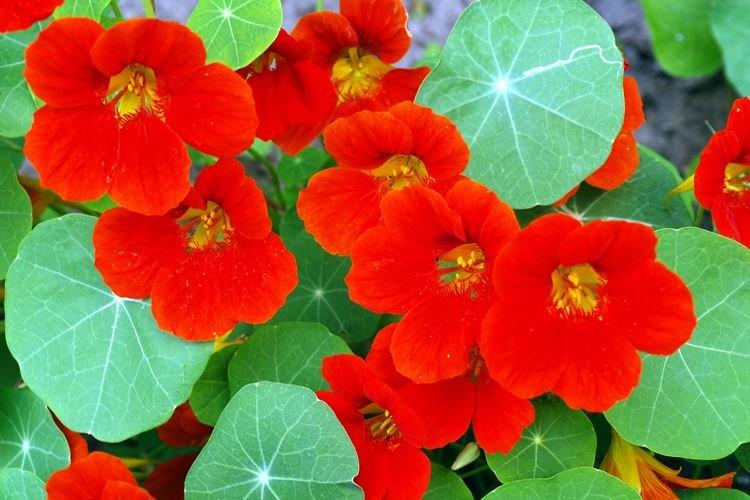
Types of nasturtium
In horticulture, about two dozen varieties of nasturtiums are grown, and some of them are even edible. We will introduce you to the most popular and common ones!
Tuberous nasturtium
This is a creeping herbaceous annual with dense branchy shoots that intertwine with each other in a real ball. The diameter of such a ball easily reaches half a meter, and for its life support, the root system grows embossed tubers. Red-orange colors with a gradient transition look very impressive.
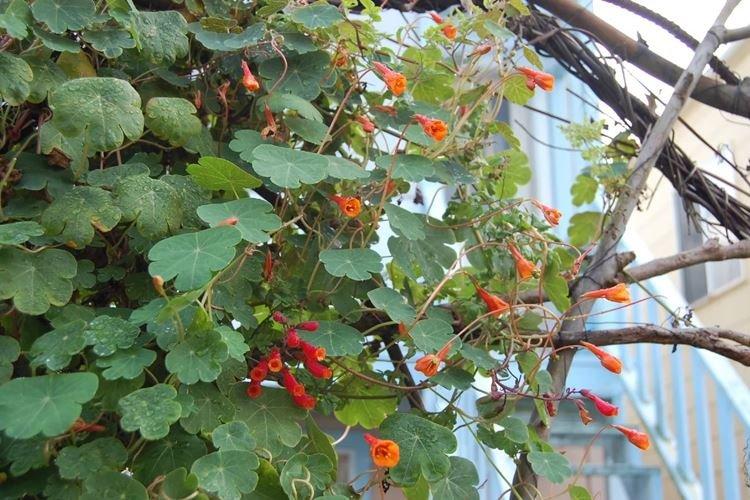
Large nasturtium
It is a very tall variety up to 2.5 m high, with large bright flowers up to 6 cm in diameter. There are not so tall, but dense shrubs, including peach, pink and salmon shades.

Small nasturtium
In contrast to large nasturtium, it is a compact species with the same compact flowers, up to 3 cm. Elastic and dense shrubs grow up to 35 cm and are densely covered with thyroid leaves.
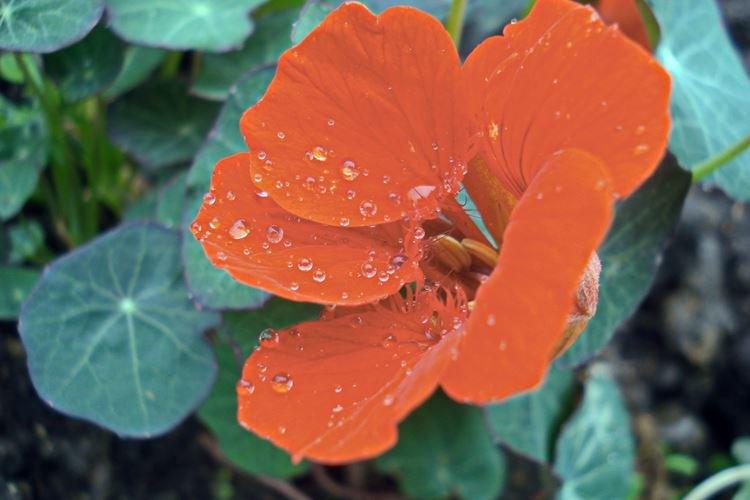
Foreign nasturtium
It is a bright yellow southern nasturtium that grows as a long, curly vine. It braids the vertical supports well and forms a dense and blooming green wall.
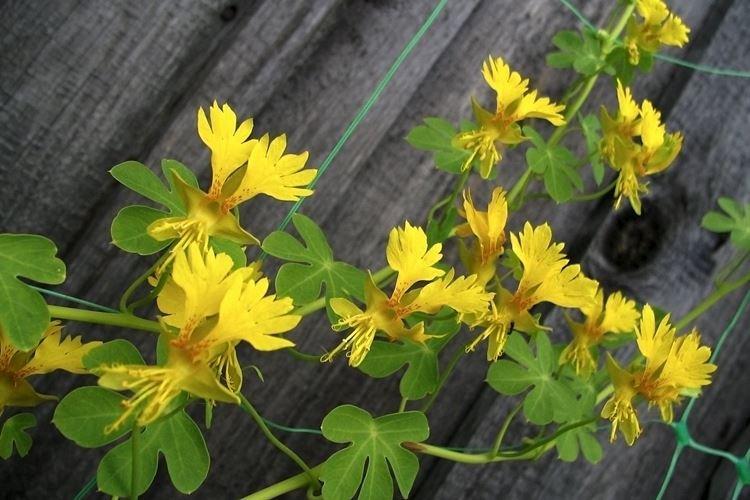
Curly nasturtium
A beautiful annual liana manages to quickly fill large spaces even in one year. It is especially good for extended horizontal landscaping of fences, balconies and verandas.

Caring for nasturtium
With enough sunlight, nasturtium does not need any complex manipulations. The only thing to always remember is that the flower has a weak root system, which requires careful handling.
Temperature and lighting
Nasturtium is a sunny flower and prefers the same sunny areas. It does not tolerate low temperatures, therefore, seeds are planted strictly after the last frost. And if there is still a risk of cold snaps, for the first time it is recommended to cover the area with a film.

Watering
The main thing is not to overflow the soil, because the plant can rot right from the root. During water procedures, try not to soak the leaves, otherwise they will burn under the sun during the day.
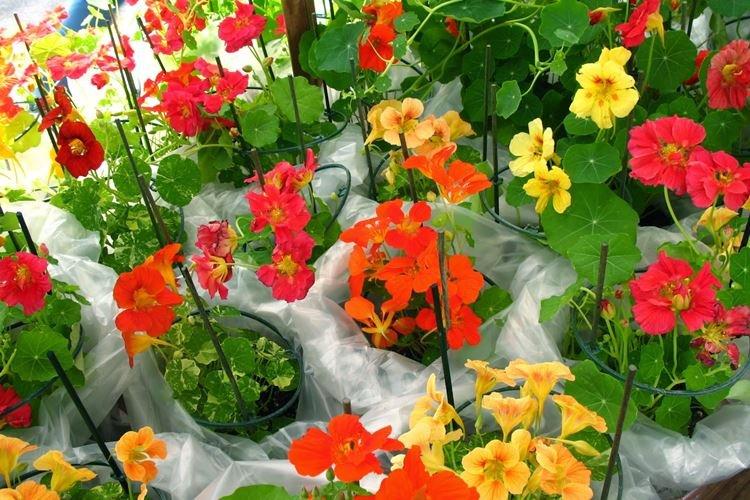
The soil
Nasturtium is one of those plants that prefer slightly acidified soils. The soil must be loose and not too wet, otherwise the flower will rot. If the soil is rich in organic matter, the flower bed will bloom even more luxuriantly.
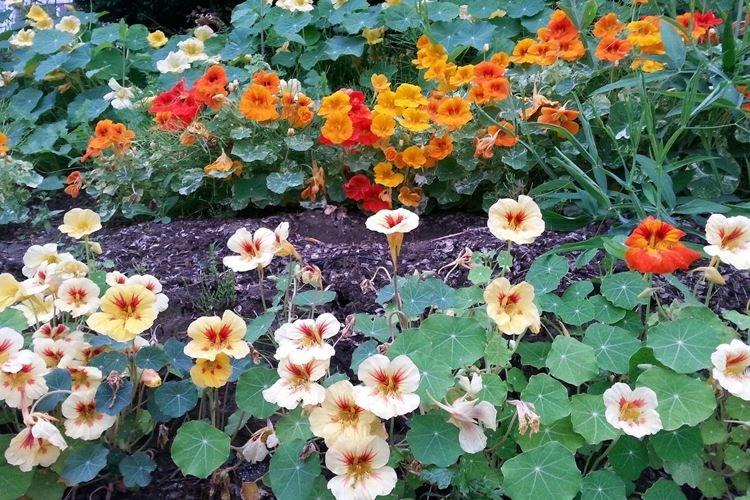
Fertilizers and feeding
Nasturtium does not tolerate poor soil, actively turns yellow and stops blooming. We recommend applying complex fertilizers during the entire period of activity. It is important that, in addition to potassium with phosphorus, there are other trace elements.
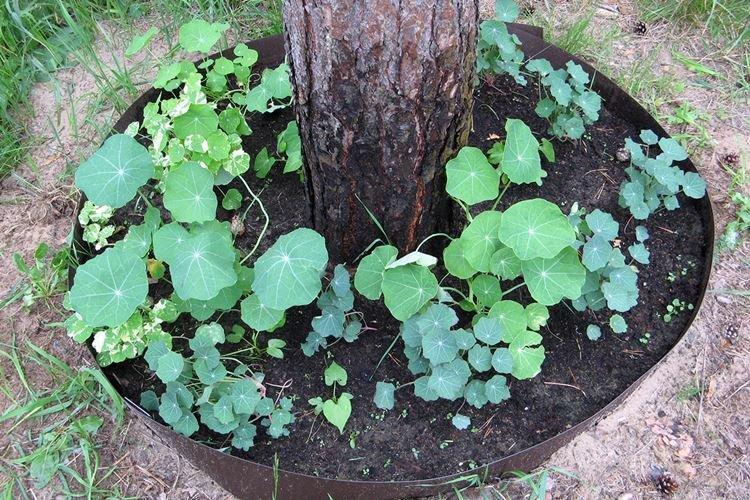
Transplant and reproduction
You can propagate nasturtium from seeds without the slightest experience, because they are immediately planted directly into the ground in May. You just need to dig small holes of 1.5-2 cm and scatter them 25-30 cm apart.In one such hole, feel free to put several seeds at once and wait for shoots in a week or two.
In order for nasturtium to bloom earlier, it is planted with seedlings in peat cups. The rest of the process remains the same, only a stable temperature above 20 degrees is needed. Keep the seedlings in a sunny place, otherwise they will not grow well, and then they will get sick for a long time.
Transplanting nasturtiums is not recommended once again, because they have very weak roots. And the ground part is dense and rather large, so this is a big stress for the flower. When planting seedlings, they are planted together with a peat cup in early June at a distance of 20-40 cm.
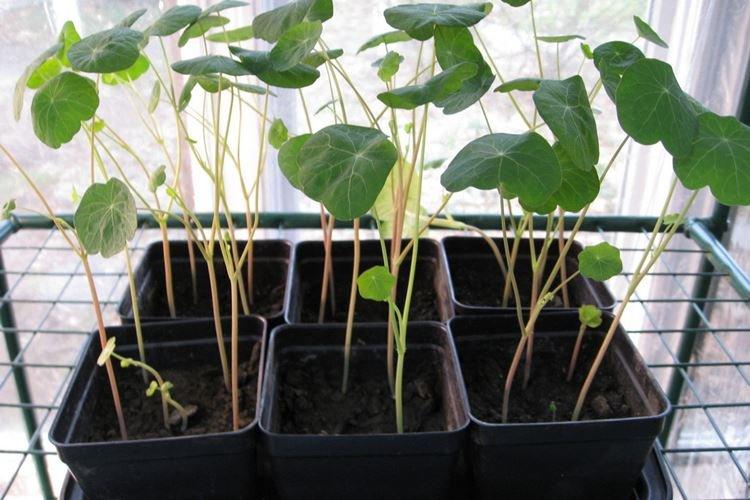
Pest and disease control
Nasturtium is susceptible to fungus and rot, which causes the leaves to turn white and bloom. All this is well treated with modern complex fungicides. If the leaves also curl, it is probably a matter of bacterial wilting, and now it is pointless to treat it.
Caterpillars love nasturtium, and their most characteristic feature is the holes in the leaves. Bugs, midges and aphids willingly settle on flowers, because this is an effective green manure that takes the blow of pests on itself. In such cases, use industrial insecticides or ash infusion.
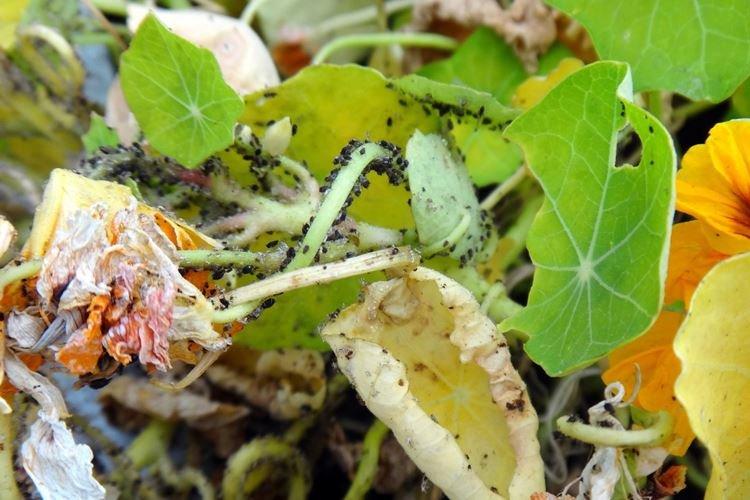
Nasturtiums - photo
Nasturtium is a very sunny flower, because it is just as bright and showy. But why tell it in words if you can just show it in the photo!
